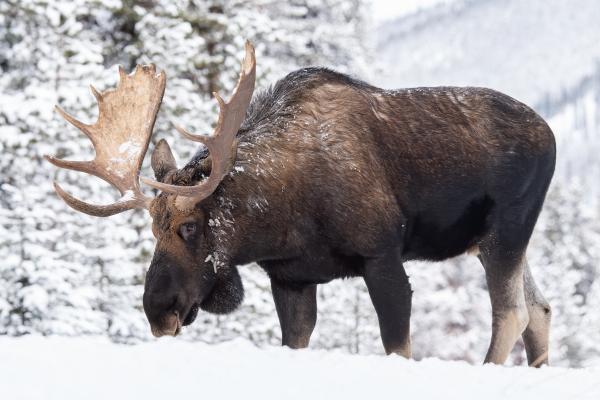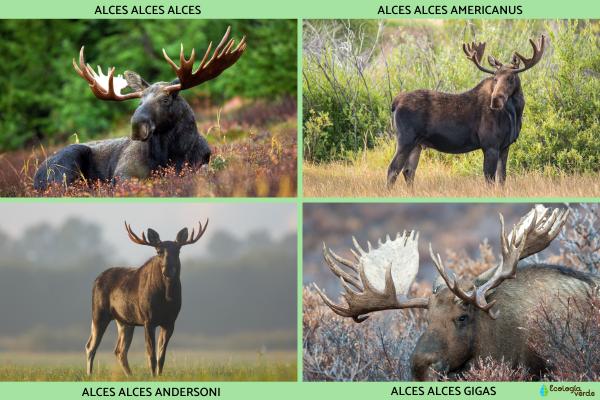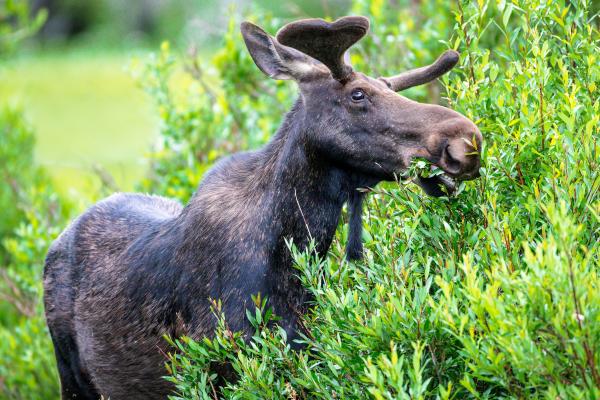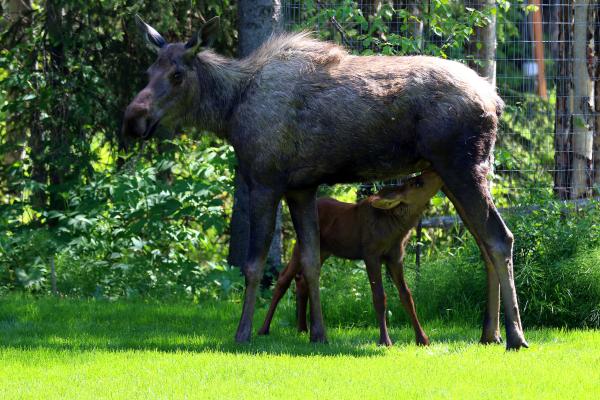The moose (Alces alces) is the largest living species in the deer family (Cervidae). There are currently eight recognized subspecies across North America, Europe, and Asia, inhabiting a variety of forested environments. Want to learn more about this majestic giant? Read on to explore its physical features, types, habitats, diet, and more.

The moose is a large, even-toed ungulate mammal and the largest member of the deer family. Despite pressures from hunting, it thrives in boreal forests across the Northern Hemisphere. Multiple subspecies are found in both Eurasia and North America.

Range: Moose are found across North America (Alaska, Canada, Rocky Mountains, Great Lakes region, New England) and Eurasia (from Scandinavia and Poland to Siberia, and south to Ukraine, Kazakhstan, and northern China).
Size: Moose stand 1.5 to 2.15 meters tall at the shoulder, with body lengths from 2.4 to 3.1 meters. Adults can weigh between 200 and 850 kilograms, making them the largest extant deer.
Antlers: Males grow large, palmate antlers used in combat and mating displays. Antler size and symmetry are influenced by age and nutrition, playing a role in female mate choice.
Cold Adaptation: Moose have large, vascularized nasal passages that warm incoming air, helping them thrive in cold climates.
Predators: Natural predators include wolves, brown bears, black bears, cougars, and Siberian tigers.

There are eight recognized subspecies of moose:
Alces alces alces – European moose, found in Scandinavia, the Baltics, and eastern Poland.
Alces alces americanus – Eastern Canadian moose, located in eastern Canada.
Alces alces andersoni – Western Canadian moose, ranging from British Columbia to Minnesota and western Ontario.
Alces alces buturlini – Kamchatka moose, found in northeast Siberia and Kamchatka.
Alces alces cameloides – Amur moose, native to northern Mongolia, Ussuriland, and Manchuria.
Alces alces gigas – Alaska moose, the largest moose subspecies, inhabiting Alaska and Yukon.
Alces alces pfizenmayeri – Yakutia moose, found in central Siberia and Stanovoy/Cherskiy mountain ranges.
Alces alces shirasi – Yellowstone moose, found from southern Alberta to Wyoming and Utah.

Moose inhabit a wide range of forest environments, including coniferous and deciduous woodlands from tundra to temperate zones. They thrive in boreal forests, wetlands, lake edges, swamps, and forest clearings. In summer, they avoid heat by seeking shade or standing in water. Occasionally, they venture into farmlands if close to forests.
Moose feed on vegetative parts of broad-leaved trees—especially birch, ash, and willow in spring and summer—and twigs from conifers like fir, pine, and juniper in fall and winter. They also consume shrubs, grasses, and aquatic plants. Some herds migrate annually in search of food, traveling up to 180 km in North America and 300 km in Asia.
The mating season (rut) occurs from September to October, with nasal vocalizations by both sexes. Gestation lasts 242–250 days. Younger females typically birth one calf, while older ones may produce two or even three. Newborn calves weigh 11–16 kg and are mobile within 2–3 days. Sexual maturity is reached after one year.

The main threat to moose populations is habitat loss due to forestry and agriculture, especially in southern parts of their range. Nevertheless, the IUCN lists the moose as “Least Concern,” as they remain widespread and abundant, with some populations expanding.
Moose are included in Appendix III of the Bern Convention and are protected in several countries, such as Germany. Many populations live within protected areas across their distribution.
We created this article in conjunction with AI technology, then made sure it was fact-checked and edited by a Animals Top editor.